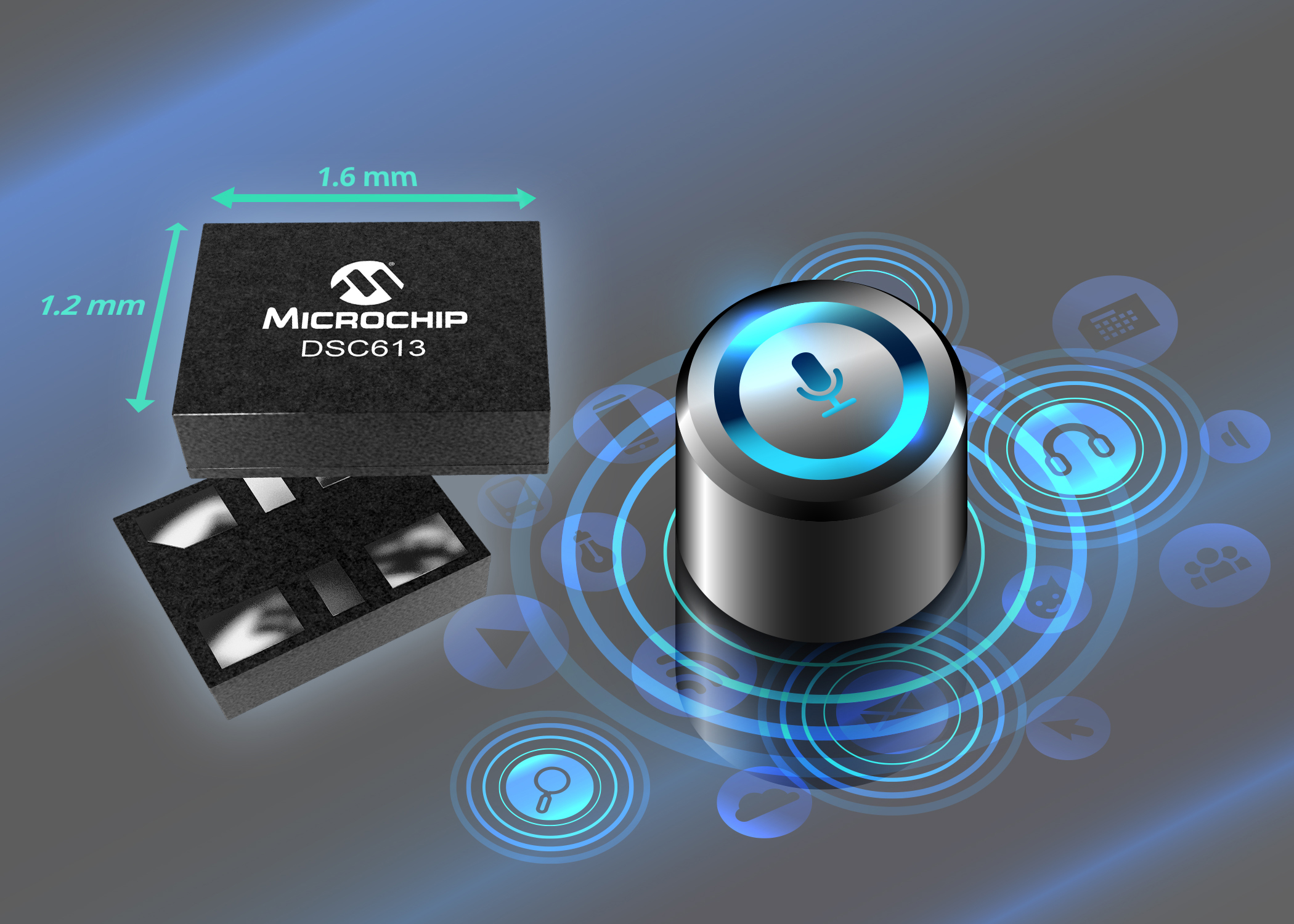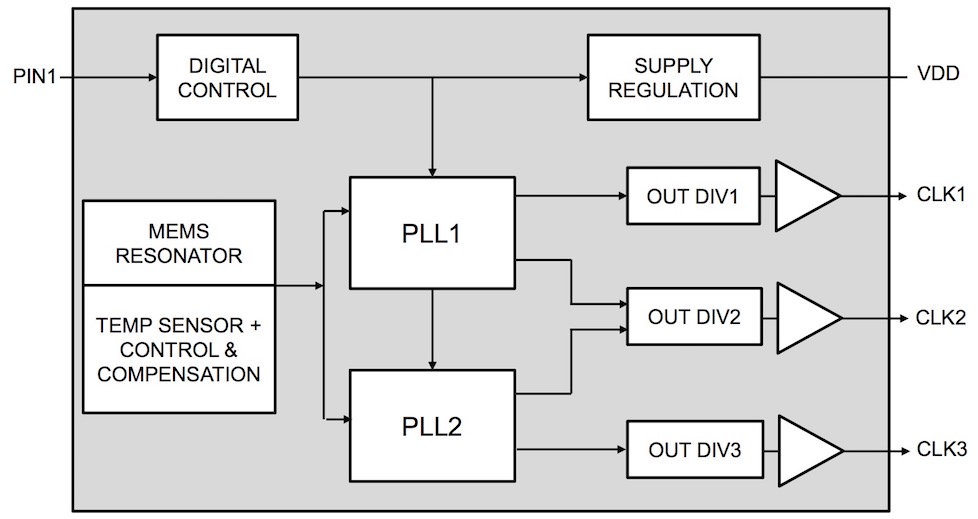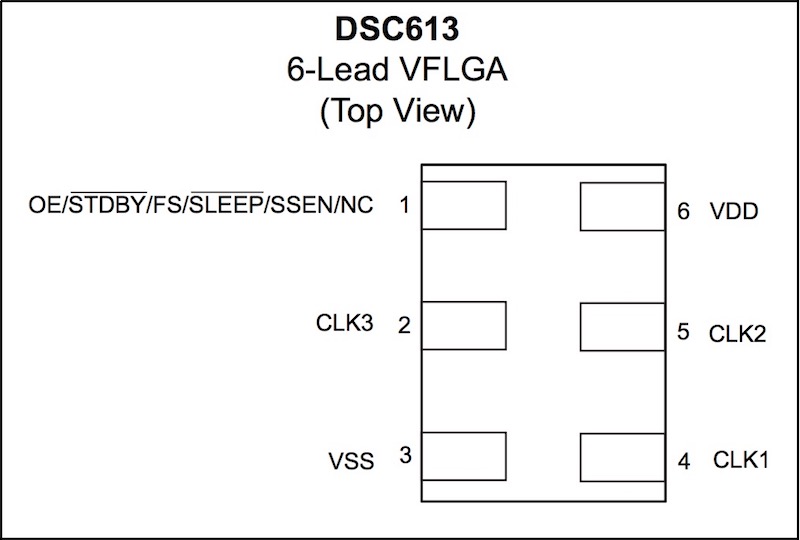In a release that addresses
multiple trends—IoT device development, customization, small component
footprint, low-power devices—Microchip recently showed their MEMS clock
generator at electronica 2018.

Wearable devices and Internet of Things (IoT) are two of the most important areas of development in electronics today, and the two criteria they share are the need to conserve both power and board real-estate.
The DSC613 is a micro-electronic-mechanical system (MEMS) oscillator complete within a package as small as 1.6mm x 1.2mm that eliminates the need for three separate quartz oscillator crystals and their associated components. The three available frequency outputs cover a range of possibilities from 2 kHz to 100 MHz.
What Is MEMS?
MEMS
is an acronym for micro electro mechanical system. They are 3D
microstructures and, most importantly, they can be fabricated using the
same techniques used to build semiconductors. For oscillators, what is
built is, essentially, a tiny tuning fork that, like its full-sized
cousin, vibrates at a known, predetermined frequency.
The Anatomy of Innovation
The heart of the DSC613 is a MEMS resonator and two-phase lock loops (PLLs).This innovation can reduce the board space required for timing circuitry by approximately 80%, with a corresponding reduction in overall system weight. Due to the miniscule current requirements of the MEMS resonator and the two PLLs, power requirements are a scant 1 µA standby in standby current, and an economical 5.2 mA in active mode.

Block diagram for the DSC613. Image from Microchip Technology
Customization
One of the most interesting things about the device is its customizable nature. Microchip’s ClockWorks Configurator must be used to choose the necessary options, create the final part number, data sheet, and order samples.
Aside from the three output frequencies, among the options that can be chosen are the temperature range, which can be as wide as -40°C to 125°C, the package size, what the control input of pin 1 will affect, and even frequency stability, which can be as tight as +/-20ppm.

Pinout for the DSC613. Image from Microchip Technology
EMI issues become more of a factor than ever in for engineers who design microminature devices. For that reason, the DSC613 can provide spread-spectrum outputs to make EMI problems less of an issue.
Environmental Factors
- The DSC613 is lead-free and RoHS compliant
- AEC-Q100 automotive stress test qualification for ICs is available
- Very Fine Pitch Land Grid Array (VFLGA) packaging
- Shock: Qualified to MIL-STD-883E Method 2002.3, Test Condition G (30,000g)
- Vibration: Qualified to MIL-STD-883E Method 2007.2, Test Condition C (70g)
Options Available for MEMS-Based Timing
MEMS
oscillators are difficult to manufacture, and a number of players have
dropped out. But, other entrants remain, with rumors of new combatants
getting ready to enter the fray. Among those presently available are:
SiTime
introduced what was perhaps the first MEMS-based oscillator in 2006,
and is said to still have the widest market penetration of any
manufacturer. If a 32 kHz oscillator is what you need, SiTime has
devices available that draw less than 1 μA and are contained within a
footprint 1.5 x 0.8 mm.
muRata
manufactures an even small 32 kHz MEMS oscillator, sized at only 0.9 x
0.6 mm. Stability is rated at 160ppm over an operating temperature of
-30 to 85°C.
The trick, as always, is to know what you need and to be guilty of neither over-specifying nor under-specifying.







No comments:
Post a Comment